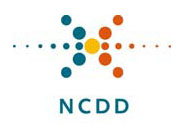by Nicola Bozzi
 With her 11-year long experience at the Koninklijke Bibliotheek, the National Library of the Netherlands, Inge Angevaare knows a good deal about archiving. Her presentation pointed out a very important and often underestimated aspect of digital information: its long-term preservation.
With her 11-year long experience at the Koninklijke Bibliotheek, the National Library of the Netherlands, Inge Angevaare knows a good deal about archiving. Her presentation pointed out a very important and often underestimated aspect of digital information: its long-term preservation.
As pointed out in the past by theorists like Geert Lovink (the internet, no matter what, needs and depends on an infrastructure) and Katherine Hayles (digital objects have their own materiality), Angevaare focused on the very real and tangible costs – in terms of both storage and human labor – that the prolonged maintenance of digital objects implies. Digital files are more fragile than we think, and even a missing bit can totally compromise the visualization of an image. For these reasons, as formats and supports are replaced over time, digital repositories need to keep up with technological evolution.
Despite the prevailing optimism about online resources as commons – which, as Angevaare points out, have never historically required the intervention of humans – the digitization, organization, and preservation of digital information over the years is worth millions in public money. As mentioned above, and even if most of us never pay attention to it, files don’t last forever, and the ever-evolving variety of formats and supports that are necessary to store them need to be taken care of constantly. Something that even Google, in its controversial digitization of the world’s books, for example, is not granting. And if the private sector is not going to safeguard the availability of information on the long run, institutions and organizations willing to cover the task have to raise public funding to do so. This is what the NCDD (Netherlands Digital Preservation Coalition), for which Angevaare currently works as a coordinator, sets out to do.
 The institution has a very ambitious mission: to establish an infrastructure for digital preservation throughout the public sector. Not only by providing facilities, but also funding and expertise, a sustainable division of labor, and synergy with the government. Since different domains have different information dynamics, the NCDD also needs to coordinate them throughout a spectrum ranging from cultural heritage to governement/archives, from media to scholarly communications.
The institution has a very ambitious mission: to establish an infrastructure for digital preservation throughout the public sector. Not only by providing facilities, but also funding and expertise, a sustainable division of labor, and synergy with the government. Since different domains have different information dynamics, the NCDD also needs to coordinate them throughout a spectrum ranging from cultural heritage to governement/archives, from media to scholarly communications.
It’s a tough job and, even if you’re not doing it, don’t take your files for granted.

